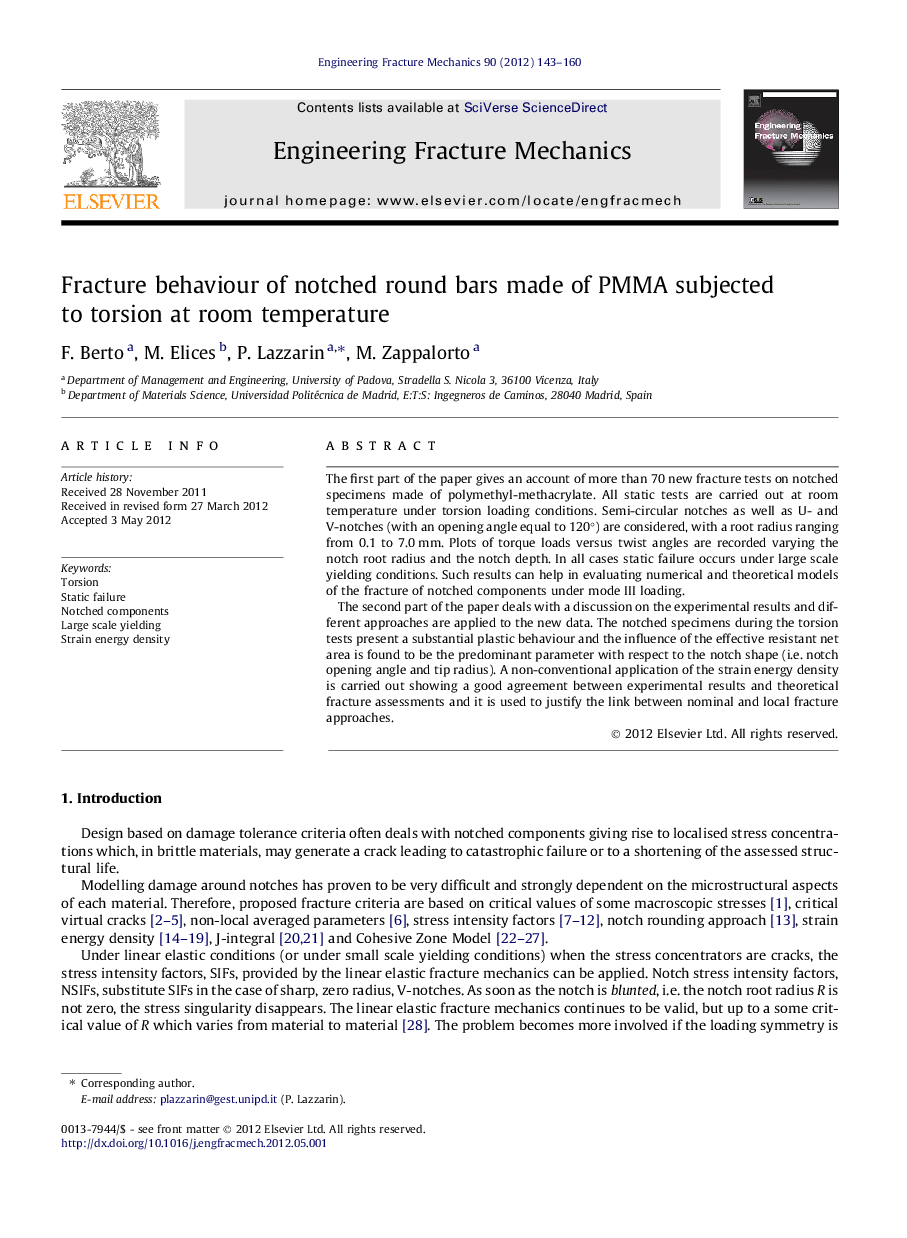| Article ID | Journal | Published Year | Pages | File Type |
|---|---|---|---|---|
| 770506 | Engineering Fracture Mechanics | 2012 | 18 Pages |
The first part of the paper gives an account of more than 70 new fracture tests on notched specimens made of polymethyl-methacrylate. All static tests are carried out at room temperature under torsion loading conditions. Semi-circular notches as well as U- and V-notches (with an opening angle equal to 120°) are considered, with a root radius ranging from 0.1 to 7.0 mm. Plots of torque loads versus twist angles are recorded varying the notch root radius and the notch depth. In all cases static failure occurs under large scale yielding conditions. Such results can help in evaluating numerical and theoretical models of the fracture of notched components under mode III loading.The second part of the paper deals with a discussion on the experimental results and different approaches are applied to the new data. The notched specimens during the torsion tests present a substantial plastic behaviour and the influence of the effective resistant net area is found to be the predominant parameter with respect to the notch shape (i.e. notch opening angle and tip radius). A non-conventional application of the strain energy density is carried out showing a good agreement between experimental results and theoretical fracture assessments and it is used to justify the link between nominal and local fracture approaches.
► Seventy new tests on notched specimens made of polymethyl-methacrylate are summarised. ► The tests are carried out at room temperature under torsion loading. ► In all cases static failure occurs under large scale yielding conditions. ► Such results can help in evaluating theoretical models of the fracture under mode III loading. ► A non-conventional application of the strain energy density is carried out.
